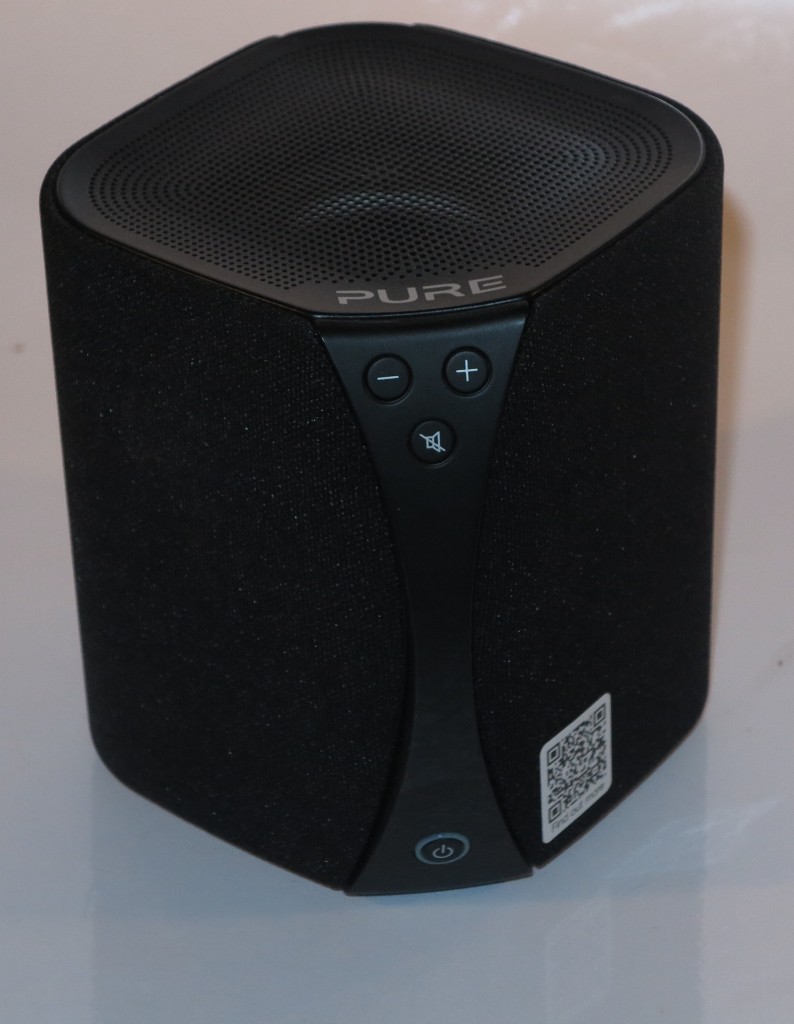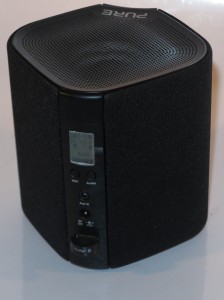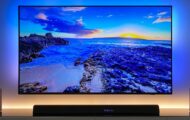Introduction
I am reviewing the Pure Jongo S3 wireless speaker which, like the rest of the Pure Jongo system, works with a Wi-Fi network as a synchronous multi-speaker setup or one-to-one as a Bluetooth speaker. This speaker also is intended for portable use by the inclusion of a “ChargePAK” battery pack which allows you to take this speaker out and about.
Price
The unit itself:
RRP including tax: AUD$369
Accessories and Options:
Replacement colour grilles: AUD$29
Form Factor
Single-piece wireless speaker
Functions
| Internet audio | Internet radio and online music via Pure Connect |
| Network Media | DLNA network audio |
Connections
| Input | Count as for a device |
| Audio Line Input (connect a tape deck, CD player, etc) |
1 x 3.5mm stereo / RCA-socket pair / DIN socket |
| Digital Audio Input | Bluetooth A2DP wireless connection |
| Network | |
| Wi-Fi Wireless | 802.11g/n WPS |
| Bluetooth | A2DP |
Speakers
| Output Power | 4 x 2.5 watt for treble, 10 watts for bass |
Stereo |
| Speaker Layout | 2.1 speaker layout in single cabinet | 4 x 3/4” tweeters, 1 x 3.5” mid-bass driver |
The unit itself
The Pure Jongo S3 is set up in a similar manner to the rest of the Jongo range. This implements the “own access point plus Web page” method where you submit your network’s details to a Web page hosted by the device itself. As well, it can support one-touch setup with another Pure Jongo speaker or a WPS-capable Wi-Fi network.
There is the ability for these speakers to pair up with the Bluetooth devices. As well, the Pure Connect app works with the Internet radio function and the ability to set up synchronous multiple-speaker play. This requires you to use the “P” icon on the app to determine which speakers are to have the content.
Being a small speaker, the Jongo S3 performs well more so on the high frequencies but loses on the bass response. It is loud enough for personal or close listening and implements indoor / outdoor sound-optimisation settings. Two of these settings have an arrangement for all-round listening so you don’t have to worry about facing the listening area. Here, these settings could be available through the Web interface as well as the local “Audio” button on the back of the speaker.
The S3 did pick up from the Wi-Fi home network very well even at the fringes of that network and streamed content properly and smoothly from the Internet radio station. Here. I even ran this as part of a multi-speaker setup that I had set up with the T6 and it gave that synchronous sound experience as expected for a broadcast or speakers connected by wire to the same source even with an Internet radio station.
Limitations and Points Of Improvement
Like the rest of the Jongo ecosystem, Pure could integrate Spotify Connect and similar online services in to their app and could make the speakers work with the Apple Airplay system as a way to have all bases covered. The Connect app could also support discovery of DLNA audio content hosted on other DLNA servers on the same network so you don’t necessarily have to have the content sitting on your mobile device.
They could work on a wireless subwoofer or bass-rich speaker that works with the synchronous multi-speaker setup as a wireless 1.1 or 2.1 speaker setup for a bass-rich multiple-speaker arrangement in a similar vein to what Sonos has done.
Conclusion
I would recommend the Pure Jongo S3 speakers more as a small wireless portable speaker that can cover a personal listening area or as something you can use with a smartphone when you out with a group of friends.




